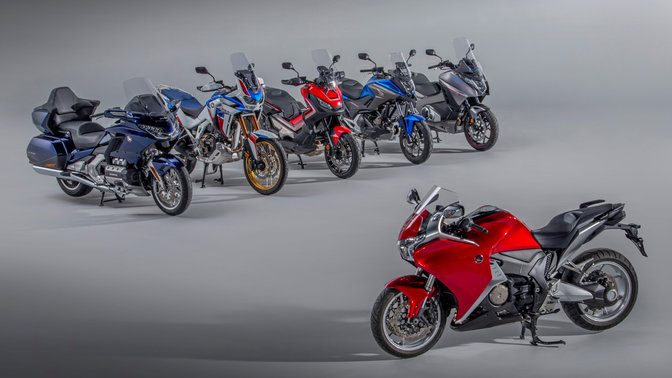- Honda's landmark – and still unique – powertrain debuted in Europe in 2010
- Since then, more than 140,000 motorcycles equipped with Dual Clutch Transmission (DCT) have been sold on the old continent
- Since its introduction, this easy-to-use solution has appeared in ten Honda models

It has been exactly a decade since Dual Clutch Transmission (DCT) became available for Honda motorcycles.
The DCT transmission was used for the first time in Europe in the legendary VFR1200F touring model, and it has been considered unique on the motorcycle market ever since. Its resounding success is proven by the fact that Honda has sold more than 140,000 engines equipped with DCT in Europe so far, and in 2019, 45 percent of Africa Twin models, 52 percent of NC750X models, and 67 percent of Gold Wings with DCT transmissions were sold on our continent.
The continuous development of the structure plays a big role in its success, as a result of which the switches have become more and more delicate and better timed, not to mention the software has also become more complex so that the DCT fits perfectly with the different types. For example, we can mention the off-road mode G-switch in the case of the Africa Twin and X-ADV, and the control electronics have also been coordinated with the anti-rollback, walking mode and automatic engine stop system of the GL1800 Gold Wing, Honda's flagship.
You can get more information about the evolution of Honda's unique transmission by clicking on the following link and reading the interview with the chief engineer responsible for development, i.e. Dai Arai:
INTERVIEW DAI ARAIVALWORD (45 KB)
What is DCT?
The DCT is an automated, electro-hydraulic-operated transmission based on two independent clutches located in a common housing - one for 1st, 3rd and 5th gears, and the other for 2nd, 4th and 6th gears. .
Switching can be done manually, using the buttons on the left side of the steering wheel, or automatically, depending on the speed of the vehicle, the speed of the engine and the position of the throttle, the electronics time the gear changes. Regardless of which operating mode is involved, the clutch and the foot shift are also handled by the DCT. During the shift, the secondary clutch is engaged at the same time as the primary clutch is disengaged, the result of which is fast, jerk-free operation, and the fact that the structure actually moves from one gear to another without interrupting the power output, as a result of which the drive of the rear wheel is almost continuous.
Honda's DCT gearbox not only supports sporty use, but also helps the driver focus even more on the road, braking distance, acceleration, turns and, of course, the landscape. It is important to emphasize that, thanks to the DCT, you are less tired during the motorcycle ride, and the stress placed on it during urban use is also reduced. Not to mention the fact that, thanks to DCT, the shifts are quieter and faster, and choking is impossible.





